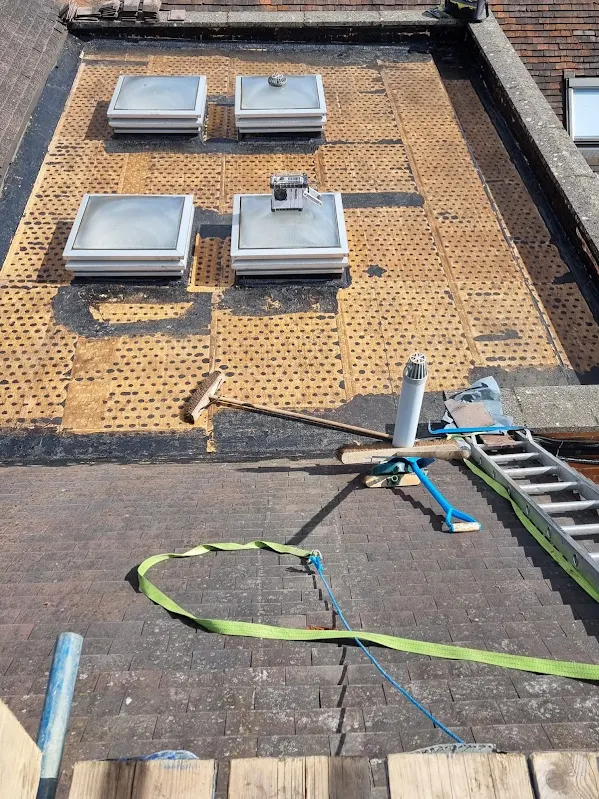+44 7853 968135
How much does it cost to have a chimney removed?
Chimney removal has become increasingly popular amongst UK homeowners seeking to modernise their properties, create additional living space, and eliminate ongoing maintenance costs. Understanding the true cost of chimney removal requires examining multiple factors, from structural complexity to regional pricing variations, ensuring you make an informed decision about this significant home improvement investment.
Professional chimney removal costs vary dramatically across the UK, with pricing influenced by removal type, property age, structural requirements, and local building regulations. This comprehensive guide explores every aspect of chimney removal costs, helping homeowners budget effectively whilst understanding the long-term value proposition of eliminating unused chimney stacks.
Understanding UK Chimney Removal Pricing Structures in 2025
Chimney removal costs in the UK range from £1,200 for basic partial removal to £12,000 for complex heritage property projects requiring specialist conservation techniques. Most homeowners invest between £2,800 and £5,500 for complete chimney removal, including structural modifications and regulatory compliance work.
The pricing structure reflects the technical complexity of safely removing structural elements whilst maintaining building integrity and meeting stringent safety standards. Professional contractors factor scaffolding requirements, waste disposal, building control fees, and potential structural repairs when calculating comprehensive removal costs.
Regional variations significantly impact final pricing, with London and South East England commanding premium rates due to higher labour costs and stricter planning requirements. Northern regions often provide more competitive pricing, though specialist heritage contractors may be less available, potentially increasing project timelines and associated costs.
Need some Support with your chimney removal? Speak with a member of our Professional Chimney Removal Team here

Complete Chimney Removal Cost Breakdown for UK Homeowners
Complete chimney removal involves dismantling the entire structure from foundation to roof level, creating maximum interior space whilst eliminating all maintenance obligations. This comprehensive approach typically costs £4,500 to £8,500 for standard residential properties, with heritage buildings requiring specialist techniques that can exceed £15,000.
The process involves careful structural analysis, temporary support installation, systematic dismantling, and comprehensive rebuilding of affected roof and wall sections. Professional contractors must navigate building regulations, ensure structural integrity, and coordinate with building control officers throughout the removal process.
Complex removals may require structural engineer consultation, particularly for load-bearing chimneys or properties with unusual construction methods. These additional professional services add £500 to £1,500 to base removal costs but ensure safe, compliant completion of structural modifications.
| Removal Type | Cost Range | Timeline | Structural Impact |
|---|---|---|---|
| Partial Removal (above roofline) | £1,200 – £3,000 | 1-2 days | Minimal |
| Full External Removal | £2,800 – £5,500 | 3-5 days | Moderate |
| Complete Removal (including internal) | £4,500 – £8,500 | 5-8 days | Significant |
| Heritage Property Removal | £8,000 – £15,000+ | 2-4 weeks | Complex |
| Multiple Chimney Removal | £12,000 – £25,000+ | 1-3 weeks | Extensive |
Partial Chimney Removal: Cost-Effective Solutions for Budget-Conscious Homeowners
Partial chimney removal focuses on removing visible portions above the roofline whilst leaving internal structures intact, providing substantial cost savings for homeowners seeking exterior improvements without major internal modifications. This approach typically costs £1,200 to £3,000, representing excellent value for properties requiring roof space optimisation or addressing weather-related deterioration.
The process involves careful dismantling of external chimney portions, professional roof repairs, and waterproof sealing to prevent future penetration issues. While internal chimney structures remain, this approach eliminates external maintenance obligations and resolves common problems such as leaking chimney pots or deteriorating mortar joints.
Partial removal suits properties where internal fireplaces retain character value or where complete removal would create excessive disruption. Homeowners retain the option for future complete removal whilst addressing immediate practical concerns about external chimney condition and ongoing maintenance requirements.
Does Removing a Chimney Devalue a House?
Chimney removal’s impact on property value depends heavily on the specific property type, local market conditions, and buyer preferences in the area. Period properties often experience value reduction when character features are removed, whilst modern homes may see neutral or positive effects from increased living space and reduced maintenance obligations.
Estate agents frequently report that buyers of Victorian or Edwardian properties expect original features, including chimneys, to be preserved where possible. However, practical considerations such as improved energy efficiency and reduced ongoing costs appeal to many contemporary buyers seeking low-maintenance properties.
The key lies in making informed decisions based on property type and target market. Properties in conservation areas or with heritage designations face additional restrictions, and unauthorised removal can significantly impact value and create legal complications requiring expensive remediation work.
For guidance on heritage properties and planning permissions, homeowners should consult Historic England for detailed advice on preservation requirements and acceptable modifications.
Understanding the Complete Cost Picture for Chimney Removal
Chimney removal represents a significant investment that requires careful financial planning and thorough understanding of all associated costs. The total expense extends beyond initial removal work to encompass structural repairs, regulatory compliance, and potential decorative improvements that ensure seamless integration with existing property features.
Professional assessment remains essential for accurate cost estimation, as hidden complications frequently emerge during removal work. Structural engineers may identify unexpected support requirements, whilst building control officers might mandate additional safety measures that impact both timeline and budget considerations.
The long-term financial benefits often justify the initial investment, particularly for properties with multiple unused chimneys or significant ongoing maintenance requirements. Energy efficiency improvements, reduced insurance premiums, and elimination of annual servicing costs contribute to overall value proposition over time.
Key considerations for chimney removal projects include:
Need Help with Chimney Removal? Talk to one of our Professional Chimney Removal Experts today!
How Much Does It Cost to Have a Chimney Removed?: Frequently Asked Questions
Chimney height, structural complexity, and accessibility represent the primary cost drivers, with scaffolding requirements and specialist equipment needs substantially impacting overall expenses. Building regulations compliance, waste disposal, and concurrent roof repairs also contribute significantly to final project costs.
DIY chimney removal is strongly discouraged due to structural safety risks, building regulations requirements, and potential insurance implications that could far exceed professional removal costs. Licensed contractors possess necessary expertise, equipment, and insurance coverage to ensure safe, compliant removal work.
Most straightforward chimney removal projects require 2-4 days, though complex removals involving structural modifications or heritage properties may extend to 1-3 weeks. Weather conditions, access difficulties, and unexpected complications can impact timelines significantly.
Planning permission requirements vary by location and property type, with conservation areas and listed buildings typically requiring formal approval before removal work begins. Most standard residential properties require building regulations approval but not planning permission for chimney removal.
Insurance companies should be notified of structural modifications, though chimney removal typically doesn’t negatively impact coverage or premiums. Some insurers may reduce premiums due to eliminated fire risks associated with unused chimneys and flues.
Internal chimney removal creates additional living space that can be incorporated into existing rooms or converted into storage areas. Professional contractors typically include basic finishing work, though decorative improvements may require additional investment.
Properly executed chimney removal eliminates ongoing maintenance, inspection, and repair costs associated with unused chimneys. Initial investment typically pays for itself through reduced heating bills and eliminated annual servicing requirements over 5-10 years.
Partial removal involving only the visible portion above the roofline costs significantly less than complete removal, though internal stacks may still require maintenance. This approach suits homeowners seeking exterior improvements without major internal modifications.
UK building regulations require proper structural support, adequate ventilation, and safe disposal of materials during chimney removal projects. Building control approval ensures work meets safety standards and maintains structural integrity throughout the removal process.
Reputable contractors should possess relevant insurance, building regulations experience, and positive customer references for similar projects. Professional associations and local building control offices can provide recommendations for qualified specialists in your area.
Removing unused chimneys eliminates significant heat loss points, potentially reducing heating costs by 10-15% in older properties. Proper sealing and insulation during removal work maximises energy efficiency improvements and long-term savings.
Structural engineers can assess load-bearing requirements and recommend appropriate support modifications before removal work begins. Some chimneys require alternative support systems installation, which increases costs but ensures building safety and compliance.
Conservation areas often restrict or prohibit chimney removal due to architectural heritage preservation requirements, as detailed on Wikipedia’s Conservation Area page. Local planning authorities provide specific guidance on acceptable modifications within designated conservation zones.
Brick, mortar, and other chimney materials require proper disposal through licensed waste management services, typically included in professional removal quotes. Asbestos-containing materials may require specialist disposal, significantly increasing costs and extending project timelines.

